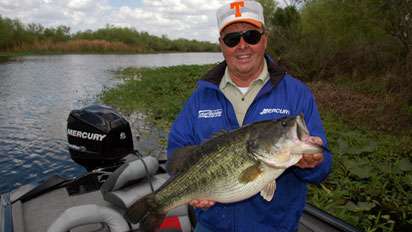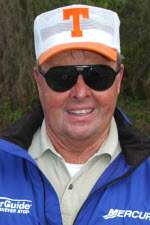
In my last blog, I was discussing the advantages of fishing reservoirs in summer and specifically those reservoirs that have hydroelectric dams that routinely create currents throughout these lakes.
When current is involved, sometimes it’s a case of the hotter the time of day, the better. Typically, there is more of a need for electricity during summer’s heat waves, so this is when dams must generate a lot of electricity. In turn, what follows is an increase of current flow that moves through reservoirs. With this increase in current comes better bass fishing.
Why the better bass fishing? Well, when the current begins to increase, baitfish like shad are drawn to deep channel dropoffs and ledges. In turn, predator fish like bass follow to feed on them. Savvy bass fishermen take advantage of these concentrations.
I’m not certain why the baitfish school on the drops/ledges with current increase. Obviously, there is something about the deep-water current changes that appeals to the baitfish, or else they would not be there.
Of course, all this current is not uniform as in a sudden blast of water. Reservoirs are huge and the current’s pull may not be noticeable great distances from the dam. Depending on the volume of flow, it could be noticeable shortly after release, or it could be many hours later if you are fishing many miles from a dam.
Knowing when the current will arrive is a big deal. Typically, it’s something you only learn after time on the water. Most dams provide release schedules via a phone recording and/or on Web sites, and that helps with timing your fishing trips. Study the release times and flows. Combine that information with what you actually learn on fishing trips, and over time you will learn where you to need to be and when to catch fish in the current.
Experience will teach you. An angler armed with such know-how can ride a wave of fishing action by plotting a course that coincides with current flow.
I think the bass bite is best when the current first arrives in an area. Any time you fish ledges or drops, look for those areas with features that differ from the norm (irregularities, a row of stumps, trees, anything “different”). Such places are more likely to hold fish, and finding these locales can make a good thing even better.
Yes, you can catch bass when the current is not moving, but current definitely gives you an edge!
For more words of wit and wisdom from one of our sport’s greatest legends, check out www.billdanceoutdoors.com.

